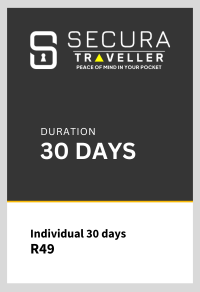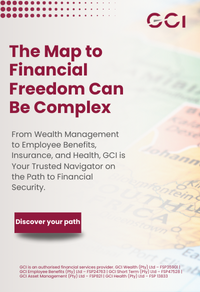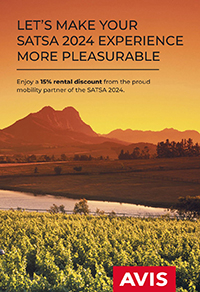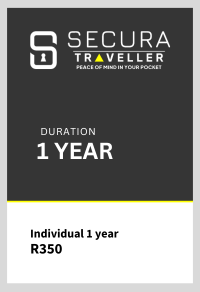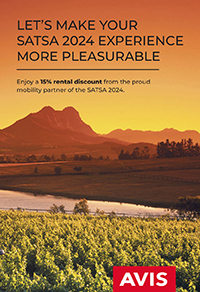The Waterberg Development Initiative shows how tourism can enable economies
Located near the Waterberg Mountain Range in Limpopo is the Waterberg Municipality, which comprises five local municipalities: Bela-Bela, Lephalale, Modimolle-Mookgophong, Mogalakwena and Thabazimbi.
When he moved to Thabazimbi, Jacques Blaauw, one of the directors of the Waterberg Development Initiative, re-ignited the local business chamber. He started working with the local government to improve basic service delivery and curb some of the corruption in the municipality. “We wanted to create sustainable careers for the people in the area. I quickly realised that if we don’t start looking at the future and developing the economy and sectors, we wouldn’t be able to achieve our goal,” he explains.
Thabazimbi, for example, had a strong mining sector, but the economy wasn’t well diversified beyond that. “If the mines were to close in 20 years – because their terms are finite – there would’ve been nothing to replace them as a job creator in the area,” Jacques adds. So, he started looking at the tourism sector.
Meanwhile, Dr Syd Catton, another director of the Initiative, was attending the President’s Waterberg District Development Model Conference in Lephalale in 2019 – one of only three models of its kind in the country. The idea was to encourage partnerships between the private and public sectors to collaborate on a budget and project basis to develop the district. Having been the CEO of two JSE-listed companies, Syd knew how to spot strategic growth opportunities when they presented themselves – and this was a perfect example.
During the conference, he explained to attending leaders that, while mining and agriculture were the biggest contributors to the local economies at the time, they weren’t sustainable.
So, he also put forward the case for tourism.
Identifying tourism’s potential as an economic enabler
Marakele National Park is considered the tourism anchor in the Waterberg District. The region is 90% rural, with a 15,000 square kilometre biosphere reserve (one of Africa’s two savannah biospheres and with a large animal population), making it the perfect destination for tourism.
“We have a lot of product owners, potential attractions, and some activities that we could offer, but there wasn’t enough structure and awareness to develop it into a proper economy for our district at the time,” Jacques points out. “On invitation from Khumba Iron Ore, one of the local mines that were due to go through mine closure, the Park Manager from Marakele National Park, mine representatives and myself as a representative of the tourism sector sat down together and decided that we couldn’t wait for local authorities to develop the local economy; we needed to start doing it ourselves.”
For many years, community leaders of the different Waterberg towns were trying to build their own databases and market their towns individually to attract potential tourism guests and opportunities. However, the tourism market is complex and often challenging to understand because there’s no specific data. “We have a lot of commercial data, but we have to find a way to turn it into tourism value, too.”
Once everyone realised working together was the only way to market the destination effectively, the Waterberg Development Initiative was born. The initiative coordinates, facilitates, and identifies new development projects that will help improve the tourism offering in the area and create jobs for the people who live there.
It focuses on three areas: tourism, conservation, and community. “You can’t have a tourism product without considering conservation and the local communities,” Jacques adds.
Jacques has since opened two restaurants, putting him right in the centre of tourism in Thabazimbi, and he loves it. “In the tourism industry, you always have to put your best foot forward, because you’re always marketing what you offer. There’s a special energy that goes into trying to convince people to come to your area – and with a background in marketing, I’m always inspired by all the different marketing approaches and impact you can have in this industry,” he says.
The tourism industry in the area is getting the structure it needs through the Waterberg Development Initiative. "As volunteers, our main aim is to ensure people know about each other and start talking about what the Waterberg is really about," Jacques explains.
Introducing the Waterberg to the world
Their biggest challenge is creating awareness. “According to the National Department of Tourism, less than 10% of Gauteng has been to the Waterberg, 28% want to visit, and 70% have never even heard of us,” Syd notes.
One of the initiatives launched in the area is Friends of the Bushveld, which encourages local business people, like fuel stations or supermarket owners, to get together with tourism product owners and get to know each other. “The beauty of the tourism industry is that we all love people – we have to be nice to everyone because we want them to keep coming back,” he says.
In Bela-Bela alone, there have already been nine of these meetings, each at a different location. Syd explains that this is a great way to showcase all the different offerings in the area, support each other’s businesses, and demonstrate that there’s no reason to compete at a micro-economic level. “In Thabazimbi, when a lodge is full, they won’t turn guests away; they refer them to Discover Thabazimbi – a tourism company that helps people find accommodation in the area. So we work together because it makes more business sense.”
Waterberg Development Initiative has also launched an on-line platform, events.waterbergtourism.com, where you can find out everything that’s happening in the area.
“Unfortunately, funding is another big challenge for us,” Jacques says. “My work locally is to convince mining leadership to invest some of their social labour programmes and CSI budget into tourism as their legacy, rather than just building infrastructure and leaving it to wither away. We are encouraging them to invest in skills development so that people can create and take on new opportunities once the mining resources have been depleted."
The full extent of the tourism industry’s impact
The Waterberg Development Initiative’s focus on tourism, conservation, and community has also enabled other industries to grow within the region. “Because of various stakeholders’ conservation efforts, the area has a huge network of cameras watching movements on the major roads,” Jacques says. What started as efforts to lower rhino poaching in the area has resulted in the Waterberg becoming one of the safest ‘tourist’ locations in South Africa.
The Waterberg is also home to some of the top hunting outfitters in the world, garnering international attention and a key economic stimulus of our local economies While game hunting often comes under the microscope, one should not overlook the more important game breeding and conservation efforts of private game farmers. “Because of the breeding initiatives of private game farmers, once vulnerable species such as sables have seen exponential growth in herds. For example, it is believed that there are now over 25,000 sables roaming private game farms in the country, many of these farms in the Waterberg, while species numbers were dwindling in our national parks,” he adds.
More international guests have also meant more five-star luxury lodges and facilities being built in areas such as Vaalwater, Thabazimbi and Lephalale. This in turn brings more local retail spend and creates more job opportunities for our local people.
The only private hospital in Bela-Bela was closed down some time ago, and the Waterberg Development Initiative is facilitating the process of reopening it. The Healthcare Hub is also trying to establish a private hospital in Modimolle. Syd explains that this could attract retiring people like himself. “At the moment, everyone is retiring in Cape Town, Plettenbergbay, Langebaan, Umshlanga, etc, but the Waterberg is just an hour away from Pretoria and a lot more affordable.”
He says that, while that doesn’t sound like tourism, if you attract retirees, they live and spend their pensions there, employ people to look after them and their homes, and their families will come to visit – who will also look for things to keep them busy in the area.
“We aim to impact our communities through our efforts,” Syd adds. A recent example came through a donation of 150 mountain bikes by one of our national Ministers to introduce mountain biking as a sport to local children. Waterberg Development Initiative worked with local stakeholders to make sure the donation delivered a sustainable impact while also improving our tourism product offering. “Laphalala Wilderness School now offers cycling as one of its activities. We’ve also created new mountain bike trails in Marakele National Park that enrich the Park’s offer to visiting cyclists. The Park also hosts the annual Powerade Marakele Marathon that includes a fun run to get the communities more involved,” Syd adds.
Public-private partnership
“Tourism should be government-enabled, private sector-driven, and community-owned or participated,” Jacques emphasises. However, he explains that there isn’t a lot of ‘tourism’ enablement from the local government’s side because they’re burdened with basic service delivery challenges. “It’s up to the private sector to work with communities to make sure they buy into what we’re working on.”
Modimolle has been identified by CoGTA as one of only three Small Town Regeneration Projects, where committees (comprising community members, municipality officials, and the private sector) will determine what we need to do to regenerate the Modimolle town – the Waterberg District Municipality’s home base. “We’ve seen this done in other towns, and we’re encouraged by their success so far,” Syd says.
He adds that getting municipalities to appreciate and take constructive criticism is essential - as they do in these meetings.
“Coming from the corporate environment, we also know that we are not tourism experts. That’s why we rely on organisations like SATSA, which is the voice of the tourism industry in South Africa, to accelerate our learning and help us grow the sector in the area,” Syd explains.
He adds that SATSA has done a fantastic job creating a platform through its membership that allows the tourism community to engage with each other and the public sector.
“It’s important to network with people fighting the same battles as you because long gone are the days when you think you can do anything independently. Together, we have to lobby for enabling environments, ensure we understand best practices, and roll out more initiatives like this to develop the entire country – not just the Waterberg,” Syd concludes.



